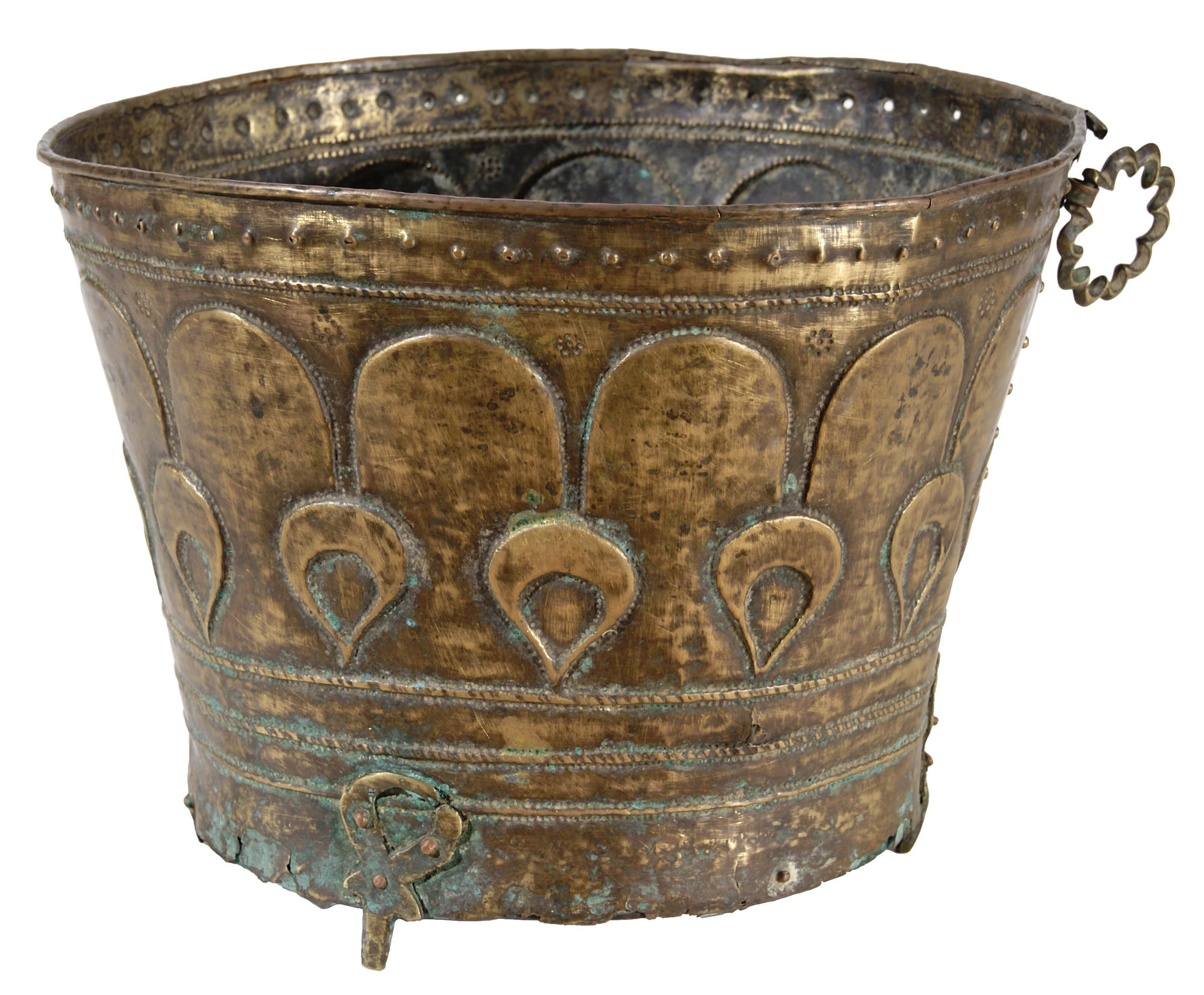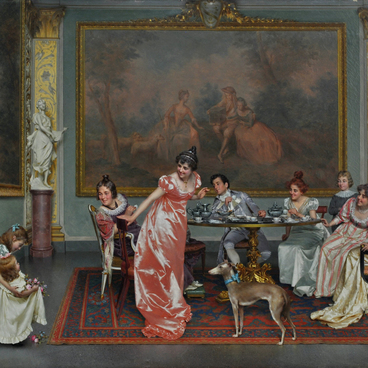The Koubachi village has long been renowned for its artistic crafts. The villagers excelled at stone and wood carving, jewellery and copper repoussé, bronze casting and weaving. In the Middle Ages, the Koubachi artisans that worked with metals became famous well away from Dagestan. Popular were the swords, chainmail armour and bridal bits they produced as well as various household utensils, such as bronze pots. To this day, the place remains one of the major centres of metal art in the Caucasus.
Koubachi measuring cup
Время создания
Late 19th – early 20th century
Размер
22х29 cm
Техника
Brass, repoussé, mounting
Коллекция
Выставка
#1
Koubachi measuring cup
#2
#5
The nuknus vessel from Koubachi is shaped like a small bucket and has a ritual significance. The nuknus at one time used to be part of the bride’s dowry. The tradition dictated that on the day of marriage the young woman would bring in it flour, sugar or honey to her husband, and arrange the vessels in the groom’s house. One of the versions of such tradition says that the young couple was supposed to sustain themselves on this food for the first 40 days.
According to a different version, after the same 40 days the contents of the bucket was distributed among the villagers. A wealthy bride was also supposed to bring a nuknus filled with jewellery — large rings and bracelets.
The number of the vessels, always even, depended on the wealth of the bride. Traditionally, up to ten such buckets would have been used during the festivities. Subsequently the nuknus would find its place on the upper shelf in the central room of the house, demonstrating the wealth of its owners. It was rarely used in the everyday life, serving only as a decoration. A Koubachi home generally had rich interiors: festive cups and plates and various other home utensils, for which there were special shelves, were always on display.
A nuknus was usually made of brass. The main ornamental motif is based on ‘claws’ linked with a dotted pattern which, in turn, forms stars and semicircles.
Married Koubachi women polished these buckets with charcoal and with such vigour that they often wore holes in them. The reason was in the local belief in Dagestan that unpolished utensils attracted evil spirits that were scared by the shiny surfaces.
According to a different version, after the same 40 days the contents of the bucket was distributed among the villagers. A wealthy bride was also supposed to bring a nuknus filled with jewellery — large rings and bracelets.
The number of the vessels, always even, depended on the wealth of the bride. Traditionally, up to ten such buckets would have been used during the festivities. Subsequently the nuknus would find its place on the upper shelf in the central room of the house, demonstrating the wealth of its owners. It was rarely used in the everyday life, serving only as a decoration. A Koubachi home generally had rich interiors: festive cups and plates and various other home utensils, for which there were special shelves, were always on display.
A nuknus was usually made of brass. The main ornamental motif is based on ‘claws’ linked with a dotted pattern which, in turn, forms stars and semicircles.
Married Koubachi women polished these buckets with charcoal and with such vigour that they often wore holes in them. The reason was in the local belief in Dagestan that unpolished utensils attracted evil spirits that were scared by the shiny surfaces.
#6
P.S. Gamzatova Dagestan Museum of Fine Arts
читать дальшескрыть
00:00
00:00
1x
Koubachi measuring cup
Время создания
Late 19th – early 20th century
Размер
22х29 cm
Техника
Brass, repoussé, mounting
Коллекция
Выставка
Открыть в приложении
Поделиться



